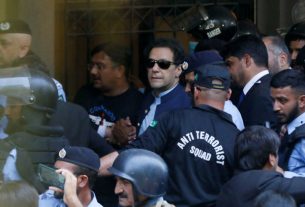|
Getting your Trinity Audio player ready...
|
Interruptions are an inevitable part of working life. Some last a short time – a phone call, an urgent task, or a colleague stopping by for a chat. While these can take a brief toll on productivity, extended interruptions such as supply-chain issues, extreme weather or machinery breakdowns, can have a more significant impact. But what if there were a silver lining?
In our research at the Hamburg University of Technology, we were curious to explore how different types of disruptions can influence employees’ creative performance and how one can even harness them to boost innovation at work.
Differentiating interruptions
Not all interruptions are the same and they can be broadly differentiated based on two characteristics: whether they allow for idle time or not, and whether they are unexpected or not. We can therefore distinguish three types of extended interruptions:
-
Surprises are unexpected interruptions that release idle time and allow employees’ minds to wander. A supply-chain disruption leading to a temporary halt in production might qualify as one, for example, or a power outage that requires a pause until electricity is restored. A critical software system going down could also be considered a surprise, as they prevent employees from completing their daily tasks.
-
Intrusions are unexpected interruptions that do not come with idle time. They typically require employees to switch their attention to the new, pressing issue. These can negatively impact creativity, as employees’ focus is diverted away from their original tasks. Examples of intrusions include urgent client requests, where a high-priority client suddenly requires immediate assistance to resolve an issue with their order or service. Employees must pause their tasks and address the client’s concerns promptly. Another example is an emergency meeting in response to a sudden crisis.
-
Planned breaks represent expected interruptions with idle time. They are scheduled and deliberate, allowing employees to step away from their work and focus on personal activities or goals and play a crucial role in employee well-being and work-life balance. Examples of planned breaks include vacations, public holidays or company-wide breaks.
The impact of different interruptions on creativity
By examining the effects of these interruptions on employees’ performance, we can identify which ones have the potential to boost innovation and how organizations can best manage them.
Conducted at a manufacturer in the automotive industry, our research investigates the creative outputs of employees during various interruptions. We used natural experiments, exploiting events such as supply-chain shortages, extreme weather events, and school breaks to explore how different types of interruptions impact creative performance.
Our findings suggest that surprises with idle time can significantly increase employees’ creative performance, understood here as the number and quality of ideas they put forward to improve their firm’s products and services. We found that individuals exposed to such interruptions generated 58% more ideas than their uninterrupted peers in the three weeks following the disruption. This boost in creativity is attributed to continued thinking about work and maintaining work goals during the interruption, which enables idea incubation.
In contrast, intrusions harm creativity. When employees are forced to switch their attention to the incoming task, their attention residue – or the amount of attention that lingers on the interrupted task – drops, reducing their creative performance.
As for planned breaks, such as vacations or school holidays, we found that they do not positively affect creative performance. During these expected interruptions, employees tend to disengage from work and focus on non-work-related goals, which lowers attention residue and hinders idea incubation. This comes nevertheless with the important caveat that breaks remain essential for employee well-being and rejuvenation.
But why is it that some interruptions are conducive to creative performance while others are not? One answer may lie in attention residue theory, which posits that some attention lingers on an interrupted task even after the individual has shifted focus elsewhere. This lingering attention can help ideas incubate and foster creative thinking. With extended interruptions, the amount of attention residue depends on whether the interruption allows for idle time and whether it is unexpected or not.
During surprises, employees have idle time to think about their work and keep their work goals active, which results in higher attention residue and increased creative performance. In contrast, during intrusions, attention residue is reduced as employees must focus on the incoming task. Similarly, during planned breaks, attention residue decreases as employees disengage from work and concentrate on non-work goals.
The art of interruption: a rulebook
The good news is that it is possible for organisations to stir up creativity by applying a series of guidelines:
-
Surprises: When unforeseen events free up time, organisations can encourage employees to use it to reflect on their work and generate new ideas. One way for management to go about this is provide tools and resources that encourage idle pondering, such as access to idea submission systems, brainstorming sessions after the interruption, or quiet spaces for contemplation.
-
Intrusions: Management ought to establish clear priorities and minimize distractions during an intrusion to enable employees to concentrate on the task at hand. Before attending to an intrusion, ready-to-resume plans in which one notes where work has been left off help to resume the original task. Once the interruption ends, support re-engagement with original work by having people reflect how they will resume the original task or promoting collaboration and communication among colleagues.
-
Planned breaks: Organizations should encourage employees to disconnect from work during vacations and other scheduled breaks to recharge and maintain a healthy work-life balance. Upon returning from a break, create opportunities for employees to share their experiences, insights, or inspirations, potentially sparking new ideas or fostering a creative mindset.
Extended interruptions are an unavoidable part of working life. However, by understanding their impact on creativity and implementing strategies to leverage their potential, one can transform these disruptions into rich opportunities. By embracing surprises, managing attention during intrusions, and encouraging deliberate disconnection during planned breaks, organizations can unleash the creative potential of their employees and foster a more innovative work environment.



